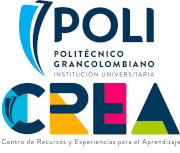Drive: a virtual research space for the development of research and digital competences in undergraduate
DRIVE: UN ESPACIO VIRTUAL DE INVESTIGACIÓN PARA EL DESARROLLO DE COMPETENCIAS INVESTIGATIVAS Y DIGITALES EN PREGRADO
Resumen
The objective of this paper is to establish the didactic methodology designed and applied within Drive for the development of research and digital competencies in undergraduate students, which is considered a virtual research space, both for the construction of research projects (PI) and subject content (CA). The study was carried out at four different times in three universities in Mexico and with different undergraduate students. An analytical rubric was designed and applied. An instrumental quantitative research was carried out at the first moment, while for the other three, an exploratory one. The first group was made up of 100 students from CUIM, UPEM and IAC to develop their IP; the second group of 32 students from IAC, with the intention of constructing their own content; the third group was made up of 43 students from IAC to develop their thesis; and the fourth group was made up of 32 students, also from IAC, with the purpose of generating their own CA. According to the different levels of mastery of the analytical rubric, most of the students are in the last two, which shows an optimal process for problem solving in the construction of a theoretical framework, and thus advances towards the management and generation of new knowledge, either from the individual or from collaboration. It is concluded that Drive is a virtual research space because it includes four essential didactic elements: the development of research from the teacher's empathy and feedback; a means of communication among peers and with the teacher; a link between scientific repositories and information management; as well as an ideal space to promote the application of the APA to scientifically support the arguments constructed by the students. El objetivo del presente trabajo pretende establecer la metodología didáctica que se diseñó y aplicó dentro de Drive para el desarrollo de competencias investigativas y digitales en estudiantes de pregrado, por lo cual se considera un espacio virtual de investigación, tanto para la construcción de proyectos de investigación (PI) como de contenido de asignaturas (CA). El estudio se realizó en cuatro momentos distintos en tres universidades de México y con diversas licenciaturas. Se diseñó y aplicó una rúbrica analítica. En el primer momento se llevó a cabo una investigación cuantitativa instrumental, mientras que para los otros tres, exploratoria. El primer grupo se formó con 100 estudiantes procedentes de CUIM, UPEM e IAC para desarrollar sus PI; el segundo grupo de 32 discentes de IAC, con la intención de construir sus propios contenidos; el tercer grupo se integró con 43 alumnos de IAC para el desarrollo de su tesis; y el cuarto grupo se conformó de 32 discentes, también de IAC, con la finalidad de generar sus propios CA. De acuerdo con los distintos niveles de dominio de la rúbrica analítica, la mayoría de los estudiantes se encuentran en los dos últimos, lo que manifiesta un proceso óptimo para la solución de problemas en la construcción de un marco teórico, y así avanza hacia el manejo y generación de nuevos conocimientos, sea desde lo individual, sea desde la colaboración. Se llega a la conclusión que Drive es un espacio virtual de investigación por incluir cuatro elementos didácticos esenciales: el desarrollo de la investigación desde la empatía y realimentación del docente; un medio de comunicación entre pares como con el profesor; un enlace entre los repositorios científicos y el manejo de información; así como un espacio idóneo para fomentar la aplicación del APA para sustentar científicamente los argumentos construidos por los discentes.
Recurso relacionado
https://journal.poligran.edu.co/index.php/panorama/article/view/2537Colecciones
- Panorama [303]
Estadísticas Google Analytics

